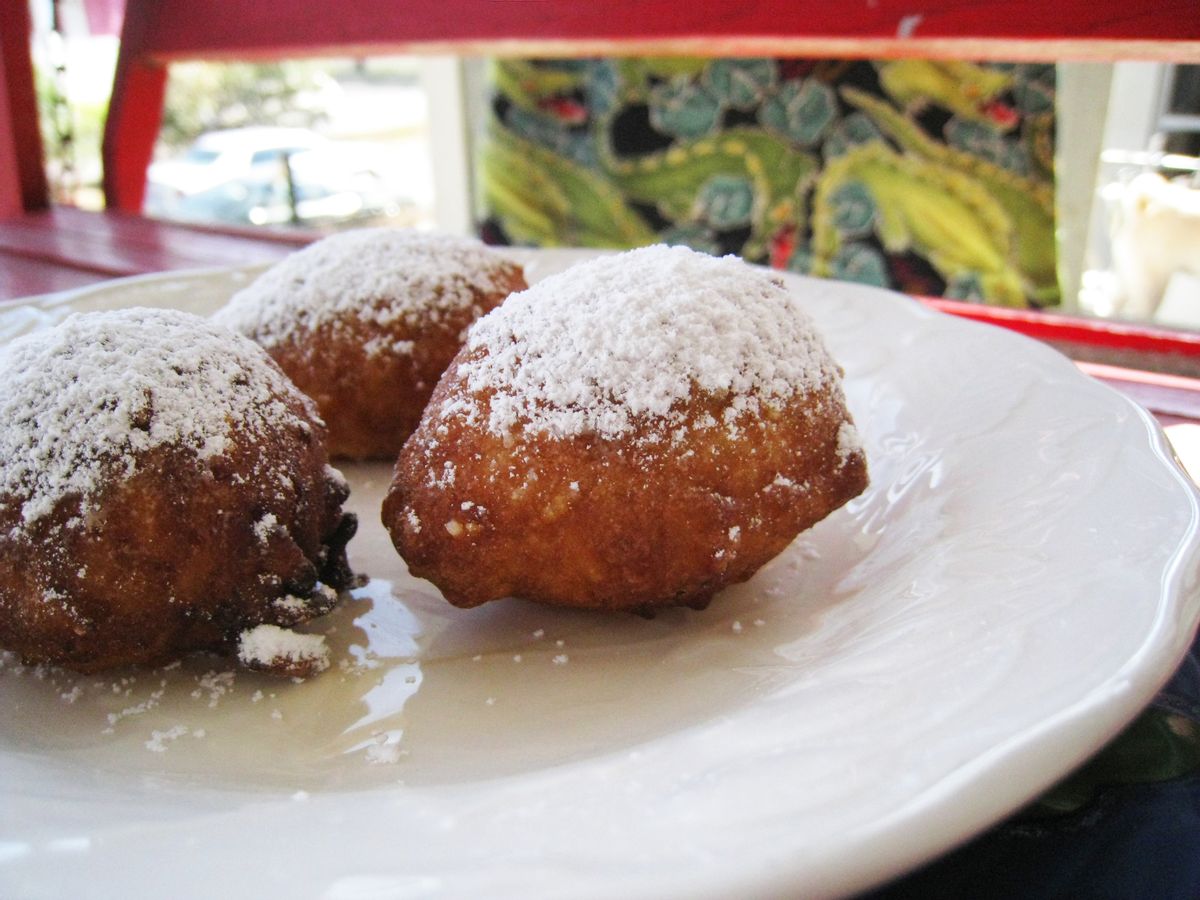If I were a cala, I would be puffy and sweet, like a doughnut edged with crispness. You wouldn't even know I was made of rice until the second or third bite, well on your way to the ninth or 10th, when you start noticing the slightest hint of the grains in your teeth, when you start noticing the mild, almost floral flavor of rice.
If I were a cala, I would have a fascinating history; slaves would have sold me to buy their own freedom.
And if I were a cala, I would want Poppy Tooker teaching the world about me.
Poppy has the energy befitting a woman with three pugs, she wears earrings shaped like red beans, and the handles to her cupboards are fashioned like forks and knives. A native white New Orleanian, she's made the preservation of a cala -- a nearly forgotten treat with deep roots in Africa and the black communities of New Orleans -- a lifelong mission, ever since a customer bit into one and started weeping, telling her how they reminded him of his mother.
She learned how to make them from an old Creole chef, and since she is regarded as being largely responsible for their resurgence in the tradition-obsessed cuisine of today's New Orleans, she generally gets around questions of "authenticity."
But there is one somewhat controversial aspect of her recipe: Poppy uses baking powder. When calas were invented, who-knows-when in West Africa, they were leavened by letting the batter sit out, collecting natural yeasts overnight and fermenting. They probably had a bit of tang. And later, they were made by adding packaged yeast, like many bread doughs, and allowed to rise for a few hours. So there are those who insist on these methods. But, as Poppy says, "If using baking powder, which was invented before the time of the Civil War -- and being able to have calas for dessert from the rice you just had for dinner -- is just too modern and convenient for you, all I can say is 'sorry.'"
She has a point.
I personally have a real sensitivity to the taste of baking powder, which I find to be weirdly tinny and hot, but most people are fine with it in quantities much greater than I prefer. If you have a similar thing going on, the brilliant pastry chef and blogger Shuna Fish Lydon recommends Rumford brand, which has a subdued flavor. Or, even better, make your own, which takes about 15 seconds.
But either way, Poppy doesn't mind however you make calas, so long as you make them and eat them.
Calas
Makes 12 (you can double the recipe, but not more than that per batch)
2 cups cooked, cold rice
6 tablespoons flour
3 heaping tablespoons sugar
2 teaspoons baking powder
¼ teaspoon salt
Dash nutmeg
2 eggs
¼ teaspoon vanilla
Vegetable oil (for deep frying)
Powdered sugar, for dusting
- Set a large pan, at least 3 inches deep, over medium-low heat with about 2 inches of oil. You're just getting a head start on warming it up.
- Make sure the rice is cold or at least room temperature. If it's hot, the sugar will dissolve into it, and the calas won't hold together. Working with a spoon or your fingers, break the rice up in a large bowl so there are no clumps. If you're not using an oil thermometer, take out a few grains, maybe 5 or 6, and reserve them. Add all the dry ingredients and mix them well into the rice; as you do so, the powders will stick to each grain making them look cartoonishly fat. It's kind of a strange, wonderful sight. (Or unnerving, if you were traumatized as a child like I was by the movie "Poltergeist.")
- Crack in the eggs and vanilla and mix them in thoroughly, so there are no dry spots. Poppy uses a smearing motion with the back of the spoon to make sure the egg is totally incorporated. This is your batter. That's it. Easy, huh?
- Check your oil. If you have a thermometer, you want it to be about 360 degrees. If not, drop in a grain of rice. It should be just hot enough to make that rice pop right up and sizzle immediately, but it shouldn't be incinerating it. Adjust the flame to get the oil to the right temperature, and then turn it to medium.
- Form the calas into quenelles with two large tablespoons (here's a video for the method) and drop them in by tipping the head of the spoon toward the oil and pushing the batter off from the back, rounding it into a cute egg shape. When the calas go in the oil, they should sink to the bottom and the heat should be enough to make them come right back up, carried on a float of sizzling bubbles.
- "It's an obedient food," Poppy says. By that she means that once one side has puffed and browned, it will roll itself over and the bottom will cook. If they don't, though, give them a gentle nudge. Work in batches, being sure to give them plenty of room to float around. Fry them until they are the color of good donuts, just past golden brown, but not much darker.
- Remove them with a slotted spoon or tongs, drain them well on several sheets of paper towel, and dust them generously with powdered sugar. Serve hot, calling, "Belle calas, tout chaud!"



Shares